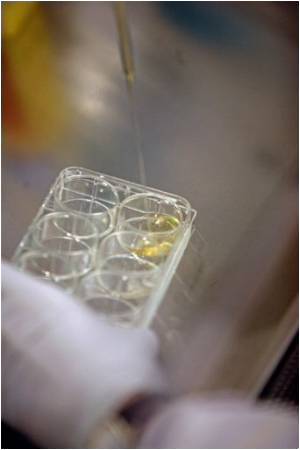New research shows how premalignant cells can respond to an activated RAS gene by entering a quiescent state, called senescence and halt cancer growth.

The team showed how the production of ROS in response to oncogenic H-RAS enables cells to fine-tune signaling pathways, leading them to enter a senescent state. A key part of this process is the impact of ROS on a protein called PTP1B. Tonks discovered PTP1B some 25 years ago. It is an enzyme – one in a family of protein tyrosine phosphatases (PTPs), of which there are 105 in humans -- that performs the essential biochemical task of removing phosphate groups from amino acids called tyrosines in other proteins. Adding and removing phosphates is one of the principal means by which signals are sent among proteins.
In cells with oncogenic H-RAS, ROS is produced in small quantities, sufficient to render PTP1B inactive. The team found that with the phosphate-removing enzyme unable to do its usual job, a key protein called AGO2 remains phosphorylated – with the consequence that it can no longer do what it normally does, which is engage the cell's RNA interference machinery. In normal cells, the RNAi machinery represses a gene called p21. But in this specific condition – with H-RAS oncogenically activated, PTP1B inactivated by ROS, and RNAi disabled -- p21 proteins begin to accumulate unnaturally, the team discovered.
"This is the key step – accumulation of p21 proteins effectively halts the cell cycle and enables the cell to enter the senescent state," explains Ming Yang, a doctoral student in the Tonks lab. She and Astrid Haase, Ph.D., a postdoctoral investigator in the laboratory of CSHL Professor Greg Hannon, are the first two authors, respectively, on the team's paper, published in Molecular Cell.
"This is confirmation of a hypothesis we presented five years ago," Tonks says. "We knew that oncogenic RAS induced the production of ROS. We proposed that this would lead to regulation of PTPs, and using the example of PTP1B this is precisely what the team discovered in this work – showing also how inactivation of this PTP is part of a complex signaling cascade that can culminate in the induction of senescence."
ROS have been linked to the pathogenesis of several diseases including Alzheimer's, diabetes and heart failure. "By showing that PTP1B inactivation by oxidation prevents AGO2 from doing its job, we make a clear link between ROS and gene silencing which could also be observed in other pathologies" says Boivin. Hence, the role of PTP1B in keeping the RNAi machinery active could have important ramifications.
Advertisement
Source-Eurekalert









